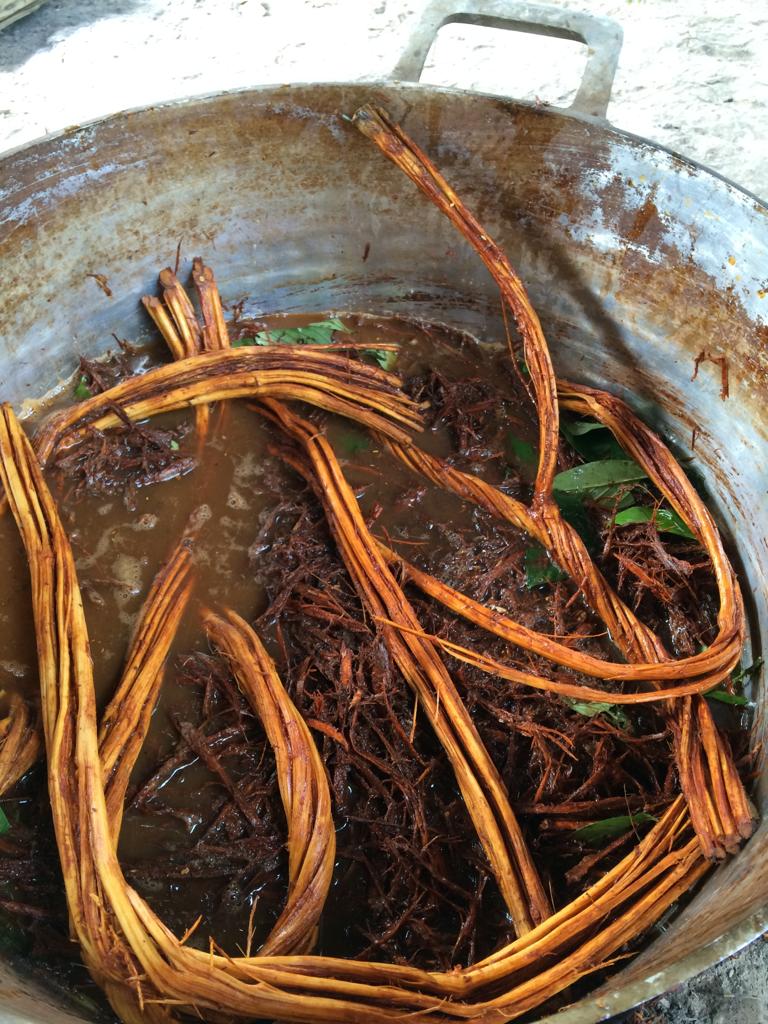Banisteriopsis caapi – Ayahuasca, Oni, Yage
Indigenous names -yagé, huasca, rambi, shuri, ayahuasca, nishi oni, népe, xono, datém, kamarampi, Pindé, natema, iona, mii, nixi, pae, ka-hee, mi-hi, kuma-basere, etc
Taxonomy – Malpighiaceae (liana family)
Comments – The Banisteriopsis vine is a Malpighiaceous jungle liana found throughout Amazonian Perú, Ecuador, Colombia, Bolivia, western Brazil, and in portions of the Río Orinoco basin. It is employed across the Amazon basin for the treatment of disease and to access to the visionary or mythological world that provides revelation, blessing, healing, and ontological security (Dobkin De rios 1972, Andritsky 1984). Banisteriopsis caapi constitutes the common base ingredient of Ayahuasca, where it is ‘married’ with other plants, such as Psychotria viridis (chacruna) or Diplopterys cabrerana (chagropanga, chaliponga, oco-yage). Banisteriopsis caapi contains beta-carbolines that exhibit sedative, hypnotic, entheogenic, anti-depressant and monoamine oxidase inhibiting activity (McKenna DJ, Callaway JC, Grob CS 1996). Furthermore, the tea constitutes a complex and diverse indigenous pharmacopia, with many other plants added depending on specific medicinal or spiritual intentions. These include Brugmansia suaveolens (Toe), Brunfelsia grandiflora (Chiric sanango), Tynnanthus panurensis (Clavohuasca), Cyperus (Piripiri), Petivaria alliacea (Mucura, Anamu), and Mansoa hymenaeamanilkara (ajos sacha) among many others.



Comments are closed